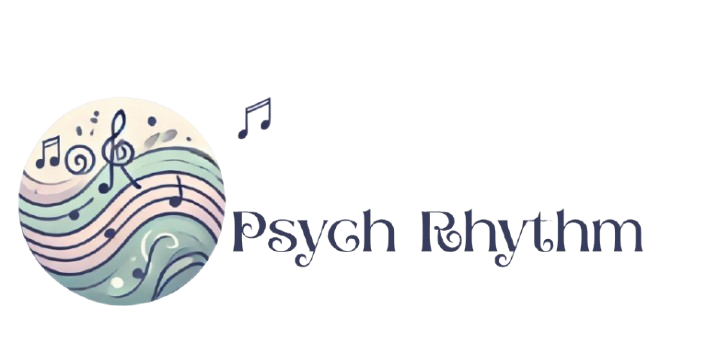In today’s hectic and frequently stressful existence, discovering ways to boost mental well-being has never been more important. Of a range of holistic methods rising in popularity, music therapy is one standout, evidence-based treatment that combines art and science. So, how music therapy works? actually .How might something as basic and ubiquitous as music assist us with emotional, psychological, and even physical adversity?
Let’s dive into the fascinating world of music therapy—what it is, how it works, the science behind it, and the ways it can be used to improve our lives.
What Is Music Therapy?
Music therapy refers to the evidence-based and clinical application of music interventions to meet individualized outcomes within a healing relationship by an credentialed professional. It’s not merely listening to your favorite tune to get through the blues (although that assists as well). Music therapists integrate many elements of music—rhythm, melody, harmony, and lyrics—into addressing the emotional, cognitive, physical, and social issues of an individual.
Music therapy may include:
- Listening to songs
- Playing the piano or a musical instrument
- Singing a song
- Songwriting or song composition
- Movement or dance to music
- Talking about lyrics or meaning of music
The important thing is that it is goal-directed and specific to the person, and usually, it’s working on problems such as anxiety, depression, trauma, delays in development, or ongoing sickness.
The Science Behind Music Therapy
So how does music do its magic? What happens in the brain during an interaction with music in a therapy session?
1. Neurological Activation
Music activates several parts of the brain at once—parts that are in charge of emotions, memory, speech, and motor control. For example, when hearing or playing music:
The auditory cortex interprets sound.
The amygdala reacts to emotional content of music.
The hippocampus links music to memory.
The motor cortex is activated when tapping out a rhythm or playing an instrument.
This diffuse brain activation is what makes music have an effect on our mood, recall memories, and even assist with motor recovery for patients who have had strokes.
2. Dopamine and the Reward System
Music engages the brain’s reward center, causing the release of dopamine—the “feel-good” neurotransmitter. That’s why music can create chills or an emotional high. In a therapy setting, it aids in the facilitation of positive reinforcement and motivation, particularly critical for people struggling with depression or anxiety.
3. Decrease in Stress Hormones
Research indicates that listening to music can decrease cortisol, the major stress hormone for the body. Decreased cortisol helps to lessen anxiety, improve sleep, and bring about general relaxation.
4. Heart Rate and Respiration Synchronization
Slow-paced music with a consistent beat can bring the body into sync with its natural rhythms, decreasing heart rate and breathing. It is particularly beneficial when training for relaxation and the alleviation of anxiety.
How Music Therapy Is Applied?
Music therapy is a flexible practice and can be adapted to different settings, such as hospitals, schools, nursing homes, rehab centers, and private clinics.
Some of the most frequent uses are as follows:
1. Treatment of Mental Health
Music therapy treats:
- Depression: Singing and listening assist a person in communicating feelings they might not be able to put into words.
- Anxiety: Soothing music and guided imagery loosen tension and induce relaxation.
- PTSD: Rhythm-based interventions, such as drumming, have been shown to regulate emotions and reconnect with the body.
2. Neurological Rehabilitation
For those recovering from a stroke, traumatic brain injury, or living with Parkinson’s or Alzheimer’s, music therapy can assist with:
- Regaining speech through singing or melodic intonation therapy.
- Enhancing motor coordination by playing instruments or responding to rhythms.
- Activating memory through familiar songs.
3. Developmental and Educational Support
In children with autism spectrum disorder (ASD) or other developmental delays:
- Music can promote social interaction and communication.
- Rhythmic activities can enhance attention and behavioral regulation.
- Songs can be employed to teach routines, language, or academic skills.
4. Pain Management and Palliative Care
In medical contexts, including cancer treatment or hospice care:
- Music therapy distracts from pain.
- Encourages emotional expression and legacy creation (e.g., composing a song with a patient).
- Reduces stress and improves quality of life.
Techniques Applied in Music Therapy
Music therapists apply various techniques based on the client’s aims. Some are:
1. Active Music Making
Clients are asked to sing, play music, or move to music. This enhances self-expression and interaction.
2. Improvisation
Improvisation in creating music aids the expression of emotions that are difficult to put into words.
3. Songwriting
Writing songs or songwriting can assist with processing grief, sharing a personal narrative, or establishing goals.
4. Receptive Listening
Clients hear music chosen for its emotional or therapeutic value. It can be employed for relaxation or emotional processing.
5. Lyric Analysis
Talking about the lyrics of songs can serve as an introduction to more profound emotional discussions.
What Does a Session Look Like?
Music therapy sessions are very diverse. A session may resemble:
- A child with autism clapping to a beat to improve motor skills.
- A cancer patient writing and recording a song about their journey.
- A group in a psychiatric facility drumming together to build connection and release tension.
- An elderly person with dementia singing along to old songs to evoke memories and maintain cognitive functioning.
- Sessions usually start with a check-in, followed by music activities, and end with a reflection phase to consolidate the experience.
Training and Qualifications of Music Therapists
Music therapy is a clinical profession. In the majority of countries, music therapists are required to:
- Have a music therapy degree from an accredited university.
- Finish clinical training and internship hours.
- Become certified or licensed (e.g., MT-BC in the U.S., HCPC registration in the UK).
This means that therapy is done ethically, safely, and effectively.
Does Music Therapy Really Work?
Yes—several studies verify the effectiveness of music therapy across a variety of conditions. For instance:
- A meta-analysis in The Lancet concluded that music interventions had a significant reduction of symptoms of depression.
- The Journal of Music Therapy has documented gains in emotional expression and social functioning for people with schizophrenia.
- Music-based therapies used in care for people with Alzheimer’s have been demonstrated to decrease agitation and enhance mood.
- Though music therapy is not a cure-all by itself, it’s a compelling adjunct therapy—and for a few individuals, nothing short of life-altering.
The Human Factor
At its core, music therapy transcends research and technique—it’s about people. Music has the ability to speak volumes when words are difficult. It can move us, bring us together, and heal us on deep levels.
Whether it’s the lullaby that calms a newborn, the song that brings to mind a loved one, or the beat that carries you through a workout, music has always been a part of how we survive, celebrate, and cope. Music therapy takes this ancient tool and sharpens it into something scientifically sound, clinically effective, and profoundly human.
Conclusion
Music therapy is a lovely integration of art and science—a method that takes advantage of the world’s common language of music to foster healing and development. Whether it’s working to address mental health issues, assisting physical recovery, or merely improving overall well-being, music therapy provides a melodic route to improved health.
So the next time you feel the weight of the world bearing down on you, put on a favorite song, sing along loudly, or grab an instrument. You may be giving yourself a little therapy—and your brain will appreciate it.

